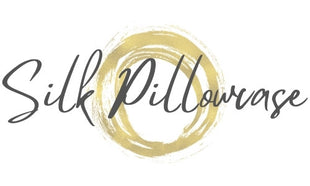Tangling and curly hair seem to go hand in hand. It appears that your hair tangles just by existing. And those darn knots can be difficult to remove at times, not to mention unpleasant! Excessive tangling can also be an indication of damage, so you should get that part checked out. However, there are several techniques you can use to protect your curly hair from matting or tangling. This article will cover everything.
How to Keep Curly Hair from Tangling
7 Best Tips to Keep your Curly Hair from Tangling
The way you care for your hair, including your wash day regimen, how you style and apply your products, and how you sleep, are all important variables in preventing tangling.
1. Reset with a Clarifying Shampoo
The first step would be to reset your hair with a clarifying treatment, which helps to remove product buildup, excess oil, debris, and minerals. This accumulation was caused by excessive product use or styling requirements. All of these things have the ability to weigh down hair and increase the likelihood of tangling. A clarifying treatment restores the hair to its original state. If you live in a hard water area, you must clarify since you may be experiencing mineral accumulation.
Clarifying shampoos are distinct from conventional shampoos in that they are designed for the purpose; nonetheless, shampoos containing harsh surfactant can also be used. In a hard water condition, however, a chelating shampoo would be preferable because it contains EDTA agents that bind to the minerals and allow them to be rinsed away.
You might also use natural home remedies such as an acid vinegar rinse or mixing baking soda into ordinary shampoo. This would be effective in removing the buildups. A clarifying shampoo is used in the same way as shampoo is used after a wash:massage the shampoo into the scalp without scrubbing! To avoid tangling, avoid piling the hair on the head.
2. Do a Pre-Poo Hair Treatment
Treating your hair before a wash is known as pre-poo. Hair can be unduly stripped of its natural oils by washing. Pre-pooing helps with that. You can use conditioner and oils as a pre-poo. If you are using a conditioner, apply it to the strands and gently working it in and detangle first with your fingers before introducing a wide tooth comb or brush.
With oils, you can perform a hot oil treatment. Take one type of oil or a blend of oils, pour them into a bowl, and warm them up with a microwave or by dipping them in hot water. Apply the oil mixture into the hair strands and massage your scalp thoroughly; this promotes blood flow to the scalp, which in turn encourages the growth of hair. Leave the treatment on for thirty minutes to two hours, and then wash it off.
3. Use a Moisturizing Shampoo
Because of the structure of the hair follicle in curly hair, natural oils and sebum have trouble going down the hair shaft, resulting in dryness. Now, here's the thing: shampoos contain surfactant, which do an excellent job of washing while unnecessarily stripping the natural oils in the process.
There is now a type of shampoos that have softer surfactant that gently cleanse without depleting the natural oils. Switching to these moisturizing shampoos allows your hair to keep its oils, minimizing dryness and tangling.
4. Never Skip a Conditioner!
Conditioners provide that slip, making detangling much easier, thus this step should not be skipped because it is essential. It also helps to moisturize the hair, prevent split ends, and restore curls.
When applying conditioner, work from the mid-lengths to the ends, and keep a weekly deep conditioner routine to help prevent knots from forming.
5. Detangle with a wide-tooth comb
It is recommended to use a wide tooth comb for detangling because it does not put strain on the hair in its fragile state. When damp, the hair is fragile, and excessive handling can cause mechanical damage. Detangle your hair in parts. Take a section and begin combing from the tips, working your way upwards. Repeat for the rest of the section. After detangling each part, twist it loosely to keep it from tangling again.
6. A Microfiber Towel or Softer Clothing can be a Game Changer!
It may be time to replace your terry towel with a microfiber towel: It absorbs a lot of water and is lint-free! An old t-shirt is also a good option. Roughing your hair with a terry towel when drying can promote tangles and frizz; choosing softer fabric prevents this because it is kinder on the strands.
7. Sleep with a Protective Head Wrap
Protective head wraps are essential for nighttime care! The reason for this is that their smooth and silky texture helps curls to flow through, preventing tangling and frizz. If you are a particularly restless sleeper, consider pairing a silk pillowcase and a silk bonnet or scarves for more protection.
